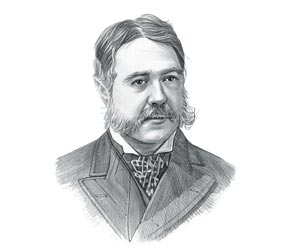|
The Burlingame Treaty was
revised and the Chinese Exclusion Act was passed on May 6, 1882.
The law was intended to restrict immigration from China for 10
years from 1882 to 1892, however the Exclusion Act was then
extended by the 1892 Geary Act and then made permanent until it
was repealed in 1943.
1882
Chinese Exclusion Act for kids: Background History
Following the acquisition of California laborers were in great
demand in the West. The land was vast and there were not enough
people so immigration was encouraged. The
California Gold Rush attracted thousands of Americans seeking
their fortune. Anti-immigrant sentiment began when the gold started
to run out. Then, in 1852, a terrible famine hit China which
resulted in a massive influx of Chinese immigrants. However cheap
Chinese labor came in demand again in 1869 when Chinese laborers
were hired for the construction of the
Transcontinental Railroad, however the completion of the
railroad freed up thousands of Chinese laborers, fueling the
hostility of American workers. The nation was hit by a long period
of economic depression and high levels of unemployment. Immigrants
were blamed which led to great friction and calls for the exclusion
of Chinese immigrants.
1882
Chinese Exclusion Act for kids: Anti-Chinese Riots
By 1870, the Chinese constituted 25% of the labor
force in California. In 1877 anti-Chinese riots occurred in San
Francisco, California. and in 1879 pressure from the west
coast resulted in Congress passing a bill to ban Chinese
immigration. President Chester Arthur at first vetoed the Chinese
Exclusion Act believing that it violated the terms of the 1868
Burlingame Treaty.
1882
Chinese Exclusion Act for kids: The 1868 Burlingame Treaty with China
In 1868 Anson Burlingame had negotiated the treaty of friendship
with China, guaranteeing the right of Chinese immigration, but did
not grant the right of naturalization. The Burlingame Treaty
was subsequently revised in 1880 allowing the United States to
limit, or suspend the entry of Chinese labor, but not to ban it. The
Chinese Exclusion Act suspended immigration of Chinese
laborers for 10 years. The law was passed by President Arthur
on May 6, 1882.
1882
Chinese Exclusion Act for kids: Laborers and Non-Laborers
The 1882 Chinese Exclusion Act
stated that "...in the opinion of the Government of the United
States the coming of Chinese laborers to this country endangers the
good order of certain localities within the territory..." The
Chinese Exclusion Act also addressed the issue of Chinese
“non-laborers” and required obtain certification from the Chinese
government that declared that they were qualified to immigrate. The
law allowed merchants, clergy, diplomats, teachers, students as
“exempt” classes to enter the United States from China.
1882
Chinese Exclusion Act for kids: Immigrants already in the US
Chinese immigrants already in the United States also
faced new requirements as the 1882 Chinese Exclusion Act also stated
that if they left the US, they needed to obtain re-entry
certification. Federal and State courts were refused the right to
grant citizenship to Chinese resident aliens but these courts
retained the legal power to deport Chinese from the United States.
Immigration Act of 1882 for kids:
US Immigration Policy
The second law passed by Congress in the same year as
the Chinese Exclusion Act was the
Immigration Act of 1882 which restricted immigrants from Europe.
This law was quickly followed by the
1885 Alien Contract Labor Law
(Foran Act) that virtually banned foreign contract labor.
1882 Chinese Exclusion Act for kids: Relatives in America
A son or daughter of an American citizen was granted
entry to the US regardless of nationality. If a Chinese immigrant
was related to a citizen in America, he or she would be allowed
entrance into the country. This exemption would result in the
phenomenon of "paper sons" and "paper daughters" in which many
people falsified papers claiming their parents were in America.
1882
Chinese Exclusion Act for kids: Future Acts
Although the Chinese Exclusion Act
was only intended to cover a period of ten years later, Acts of law
were passed extending the period of exclusion. The 1882
Exclusion Act expired in 1892 but a new treaty was signed in 1894 in
which China agreed to exclusion of Chinese laborers for 10 years and
the Exclusion Act was extended it for 10 years through the Geary
Act. The
Angel Island
Immigration Station
was opened in 1910. The extensions continued and were eventually
made permanent and the immigration law of 1924 excluded all
classes of Chinese immigrants and extended restrictions to other
Asian immigrant groups.
Repeal of the Exclusion Acts
In 1943 the Exclusion Acts were repealed when the 1943 Magnuson Act was signed,
setting an annual immigration quota and extending citizenship
privileges to Chinese. |

